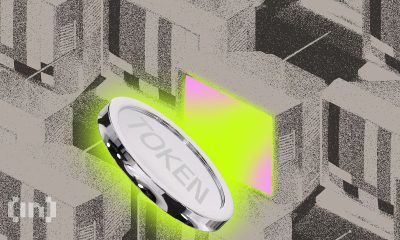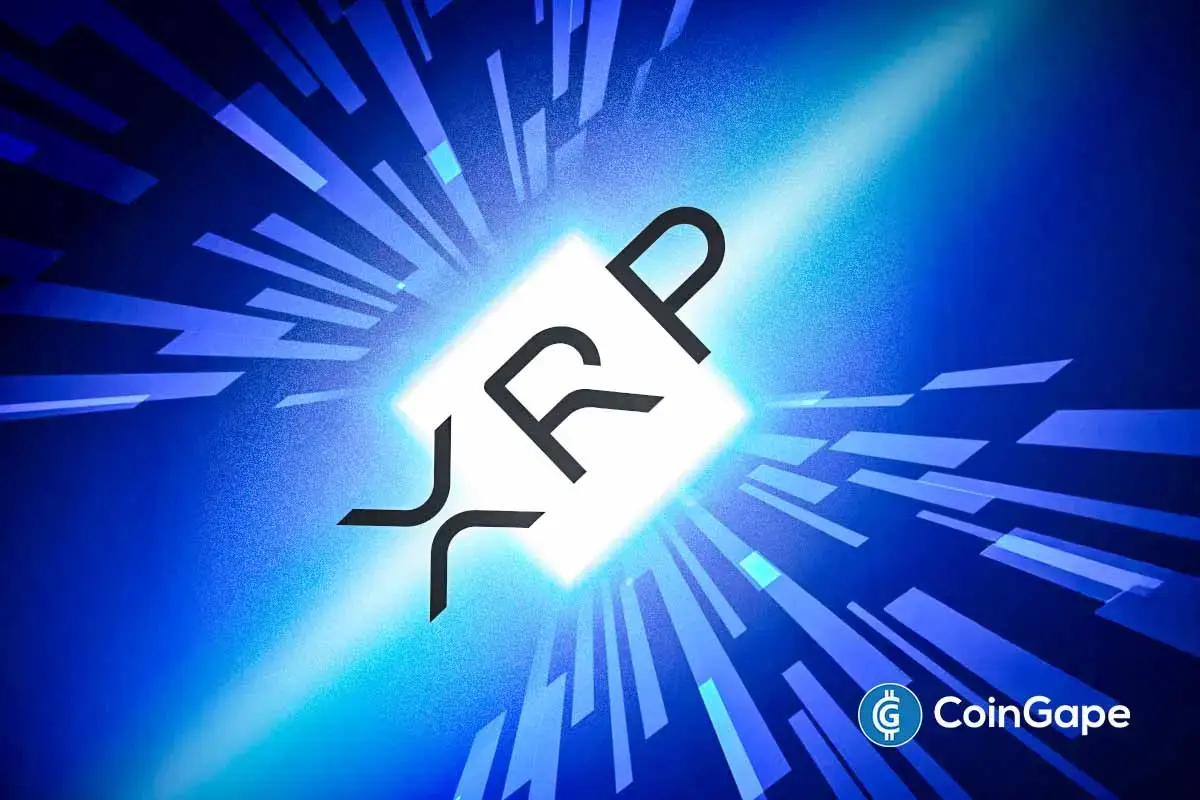Market
How to Stake DYDX Tokens
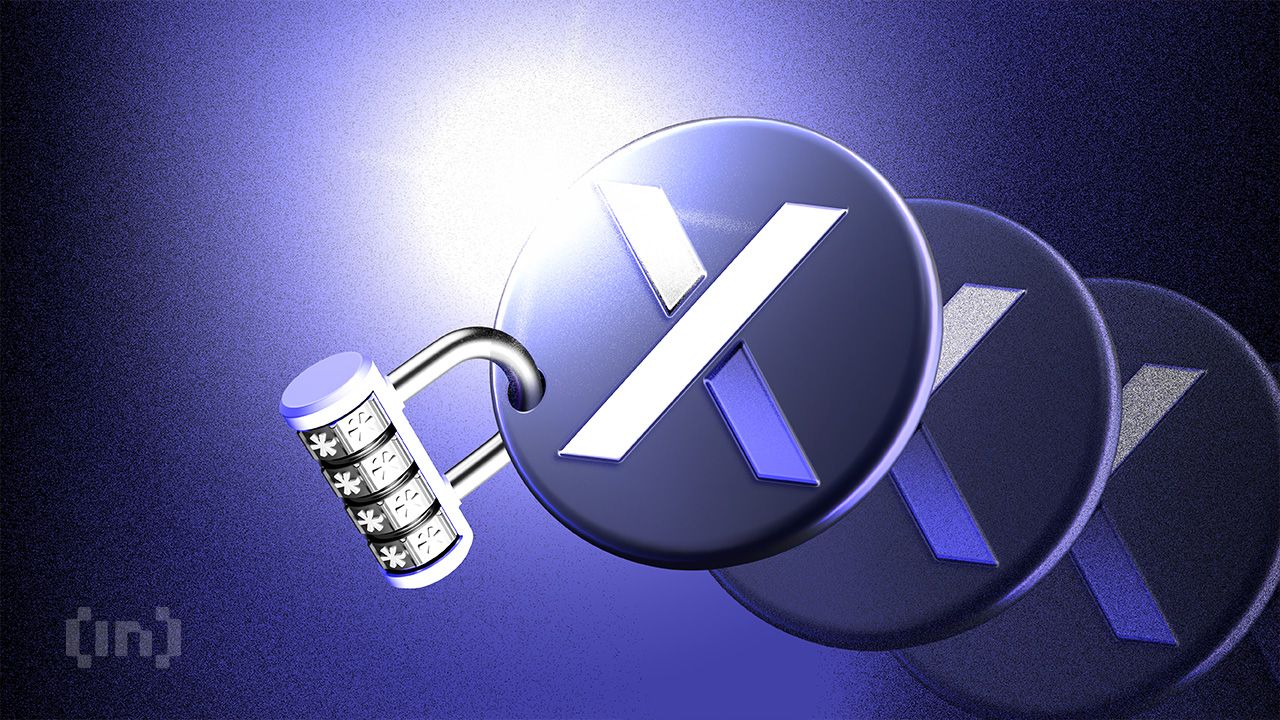
Decentralized finance (DeFi) platforms continuously transform, bringing innovative financial solutions and enhancing security through distributed systems. An essential component of the dYdX Chain’s functionality is its staking mechanism: as with other Proof-of-Stake consensus mechanisms, it secures and stabilizes the chain whilst enabling the community to actively participate in governance and consensus processes.
This article provides a guide to staking DYDX tokens on the dYdX Chain, from understanding the basics of staking to managing and optimizing your positions.
The Importance of Staking on dYdX Chain
Staking in the context of blockchain technology involves holding funds in a cryptocurrency wallet to support the operations of a blockchain network and receive rewards. In many Proof of Stake (PoS) mechanisms, staking contributes to the network’s security and efficiency. Users stake their tokens to gain the right to participate in managing the network, including voting on protocol changes and validating transactions.
dYdX Chain leverages the Cosmos SDK Staking module which supports a PoS blockchain and enables DYDX holders to become Validators and/or delegate the stake of their DYDX to a dYdX Chain Validator.
For the dYdX Chain, staking is not only a measure to secure the network but also a mechanism to reward stakers. Stakers help to decentralize the Validator set improving the decentralization of the network. In return, they earn staking rewards, which are predominantly derived from the trading fees generated by the platform.

dYdX distributes 100% of protocol fees to stakers in USDC instead of the native token. As of today, the protocol has allocated $24.6 million to over 21,000 stakers. According to Mintscan, current APR for staking DYDX sits at 19,45%.
How to Stake DYDX
The process of staking DYDX tokens involves several key steps:
Staking
Staking DYDX tokens on the dYdX Chain is key to secure the network, rewards stakers with USDC staking rewards and enables the community to participate in governance.. This guide will provide you with a clear and concise method to stake your DYDX using the Keplr wallet, which interfaces directly with the dYdX Chain, allowing for both standard and liquid staking options. Staking is also available through Ledger Live, Leap and Anchorage. Over time it’s likely there will be additional staking providers to choose from.
Keplr is a non-custodial blockchain wallet accessible via a web browser extension or mobile app. It’s specially designed for the Cosmos ecosystem and is enabled by Inter-Blockchain Communication (IBC).
Step-by-Step Procedure
1. Bridge Tokens:
First, make sure your DYDX tokens are on the dYdX Chain by following the bridging from Ethereum to dYdX Chain how to guide.
2. Setup Keplr Wallet:
- New Users: Install the Keplr wallet extension, create an account, and navigate to the staking dashboard.
- Existing Users: Import your wallet using a secret phrase and navigate to the staking dashboard.
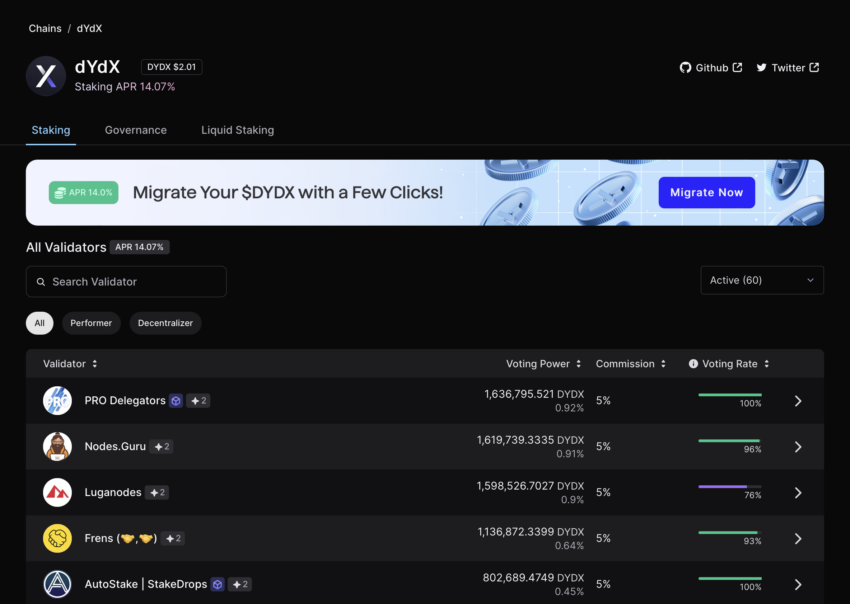
Staking:
- Access the ‘Staking’ section on the Keplr Dashboard.
- Choose a Validator from the list and decide the amount of DYDX to stake.
- Confirm the transaction by paying the required gas fee.
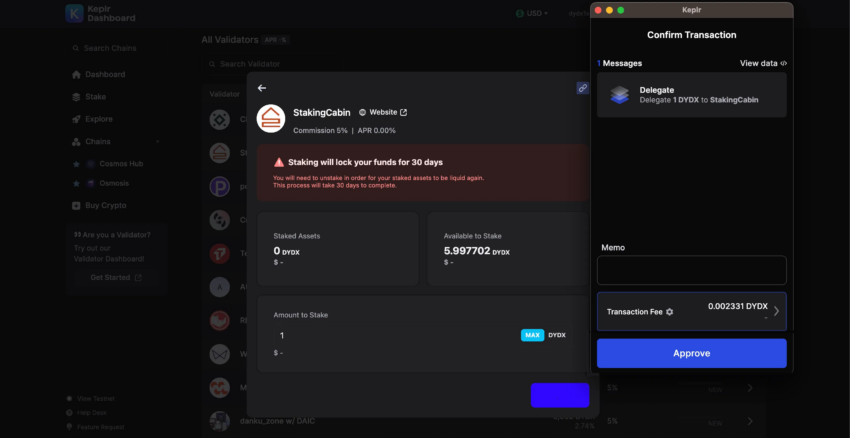
Follow this How-to-Stake guide for further information.
Liquid Staking Option
You can also opt for liquid staking through platforms like Stride, Quicksilver and pStake Finance, which allows you to stake DYDX and receive liquid staking tokens in return.
Staking DYDX is a straightforward process: once your tokens are bridged and your Keplr wallet is set up, you’re ready to jump in. By staking, you not only help secure the network, you receive 100% of protocol fees distributed to dYdX Chain Stakers. Choose your Validator/s wisely to maximize your returns and secure your investment.
Redelegating
Redelegating DYDX tokens allows you to shift your staked tokens from one Validator to another on the dYdX Chain without undergoing an un-bonding period. This guide will walk you through the process of re-delegation using the Keplr wallet, ensuring your tokens remain active and continue earning rewards while switching Validators.
1. Access Validators List:
Log into your Keplr wallet and navigate to the staking section where your current validators are listed.
2. Initiate Redelegation:
- Click the arrow next to the validator where your DYDX tokens are currently staked.
- Select “Redelegate” from the options.
3. Select New Validator:
- Choose a new validator to whom you wish to shift your delegation.
- Enter the amount of DYDX tokens you want to redelegate and confirm by clicking ‘Redelegate’.
- Complete the transaction by paying the necessary gas fees on the dYdX Chain
4. Confirmation
After the transaction, check your dashboard to confirm the update to your staked tokens’ allocation.
Re-delegation is a valuable feature that enhances flexibility in staking strategies without sacrificing reward potential. It’s essential to consider the performance and reliability of new Validators Remember, the slashing risk of your tokens will follow the original Validator’s performance until the end of the u-nbonding period.
Unstaking
Unstaking DYDX tokens is a process to remove your tokens from being actively staked to a Validator on the dYdX Chain. This guide provides an overview of the steps to withdraw your stake using the Keplr wallet, detailing the un-bonding period and the management of the tokens post-unstake.
Step-by-Step Procedure
- Access Keplr Dashboard:
Open your Keplr wallet and navigate to the validators to whom you have staked DYDX tokens. - Begin Unstaking:
- Click on the Validator from whom you wish to remove your stake.
- Enter the number of DYDX tokens you wish to un-stake and confirm by clicking ‘Undelegate’.
- Pay the necessary gas fee on the dYdX Chain to process the transaction.
- Un-bonding Period:
Note that your DYDX tokens will enter a 30-day un-bonding period, during which they are not active but still under the slashing risk from the original validator.
Un-staking DYDX tokens allows you to regain control of your assets, but it requires understanding the risks and timing due to the un-bonding period. Once unstaked, you can choose to restake with a different Validator or manage your tokens as you see fit. This flexibility supports diverse strategies aligned with your investment goals and risk tolerance.
Key Considerations in Staking
Validator Performance
The choice of Validator is crucial since a Validator’s performance and reliability affect the staking rewards. Validators with high uptime and efficiency in transaction processing are likely to generate higher rewards for their stakers.
Slashing Risks
Staking on blockchain networks involves certain risks, including slashing. If a Validator acts maliciously or fails to fulfill their duties, they and their stakers may be penalized by slashing (partial loss) of the staked tokens. Therefore, choosing a reputable and reliable validator is essential.
Lock-Up Periods
Staked DYDX tokens are locked up during the staking period, which means they are not liquid and cannot be traded or transferred. Understanding the terms related to the lock-up period, including any conditions that might affect the ability to withdraw or move staked tokens, is vital for effective staking strategy planning.
Advanced Staking Strategies
Experienced stakers might engage in strategies such as staking derivatives, where they use synthetic assets to represent staked tokens, allowing them to remain liquid. Additionally, dynamic staking strategies might involve shifting stakes between validators based on performance and reward forecasts.
Conclusion
Staking DYDX tokens secures and stabilizes the network, rewards stakers with 100% of protocol fees distributed in USDC and enables the community to participate in governing a fully decentalized market leading protocol. To date over 15%(153M) of the total DYDX token supply is locked up and securing the dYdX Chain. When selecting Validators DYOR, manage risk, and if you decide to engage in advanced staking strategies understand the risks.
Disclaimer
In adherence to the Trust Project guidelines, BeInCrypto is committed to unbiased, transparent reporting. This news article aims to provide accurate, timely information. However, readers are advised to verify facts independently and consult with a professional before making any decisions based on this content. Please note that our Terms and Conditions, Privacy Policy, and Disclaimers have been updated.
Market
Cardano (ADA) Jumps 4% as Bullish Signals Emerge

Cardano (ADA) is up 4% on Monday, trying to hit $0.65, showing signs of renewed bullish momentum. Technical indicators are beginning to align in favor of buyers, with the BBTrend turning positive for the first time in days and the DMI signaling strengthening upward pressure.
ADA is also nearing a potential golden cross formation on its EMA lines, which could further support a breakout if resistance levels are cleared. With momentum building and key levels in sight, Cardano is entering a critical zone that could define its short-term direction.
Cardano Shows Early Signs of Recovery as BBTrend Turns Positive
Cardano BBTrend has just flipped back into positive territory at 0.11, following four straight days in the negative zone. This shift, though subtle, may be the first sign of momentum stabilizing after recent weakness.
BBTrend, or Bollinger Band Trend, is a technical indicator that gauges the strength and direction of a trend based on how wide or narrow the Bollinger Bands are.
When the bands begin to expand and BBTrend moves into positive values, it often suggests growing volatility in favor of an emerging bullish trend. On the other hand, prolonged negative readings typically signal fading momentum and a lack of directional strength.

While a BBTrend of 0.11 is still low and not yet signaling a strong uptrend, the fact that it turned positive marks a potential inflection point.
It suggests that selling pressure may be fading and the price could be entering a recovery phase if buying activity increases. This early uptick in BBTrend often precedes a broader move.
Traders will likely be watching closely to see if this positive shift is sustained in the coming sessions, as continued gains in BBTrend could indicate the beginning of a more defined upward move for ADA.
Cardano Buyers Regain Control as Uptrend Shows Early Strength
Cardano Directional Movement Index (DMI) is showing a notable shift in momentum, with its Average Directional Index (ADX) climbing to 17.79, up from 13.77 yesterday.
The ADX measures the strength of a trend, regardless of its direction, on a scale from 0 to 100. Values below 20 suggest a weak or non-existent trend, while readings above 25 typically confirm that a trend is gaining strength.
ADA’s ADX is still below the 20 threshold but rising steadily—indicating that momentum is building and a stronger directional move could soon take shape.

Looking deeper, the +DI (positive directional indicator) has jumped to 26.38 from 16.30 just a day ago, signaling increased buying pressure. Although it has slightly pulled back from an earlier peak at 29.57, it remains firmly above the -DI (negative directional indicator), which has dropped significantly from 22.72 to 13.73.
This widening gap between the +DI and -DI suggests a clear shift in favor of bulls, with buyers regaining control after a brief period of selling pressure.
If the ADX continues to rise alongside a dominant +DI, it could confirm a strengthening uptrend for Cardano.
Cardano Nears Golden Cross as Bulls Eye Breakout—but Key Support Still in Play
Cardano price is approaching a potentially bullish technical development, as its EMA lines suggest a golden cross may form in the coming sessions.
A golden cross occurs when the short-term moving average crosses above the long-term moving average, often signaling the start of a stronger uptrend.
If this crossover is confirmed and ADA manages to break above the resistance at $0.668, the next upside targets sit at $0.709 and $0.77—levels not seen since late March.
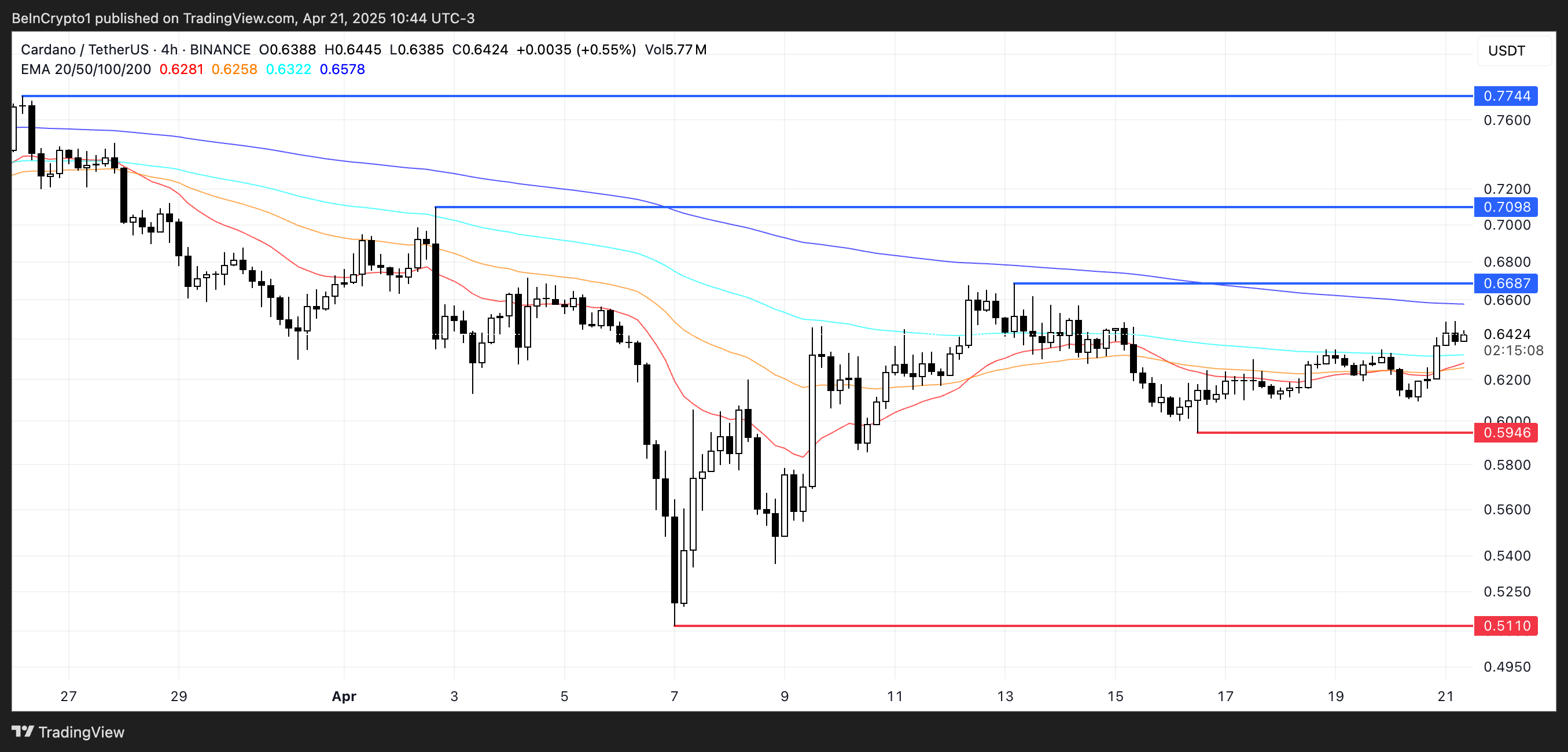
However, if ADA fails to maintain its upward trajectory and the momentum fades, downside risks remain in play.
A drop back toward the $0.594 support would be the first sign of weakness, and a breakdown below that level could expose the asset to deeper losses, with $0.511 as the next key support zone.
Price action around the $0.668 resistance will likely be the deciding factor.
Disclaimer
In line with the Trust Project guidelines, this price analysis article is for informational purposes only and should not be considered financial or investment advice. BeInCrypto is committed to accurate, unbiased reporting, but market conditions are subject to change without notice. Always conduct your own research and consult with a professional before making any financial decisions. Please note that our Terms and Conditions, Privacy Policy, and Disclaimers have been updated.
Market
Bitcoin ETFs Dominate Market Despite 72 Altcoin Proposals
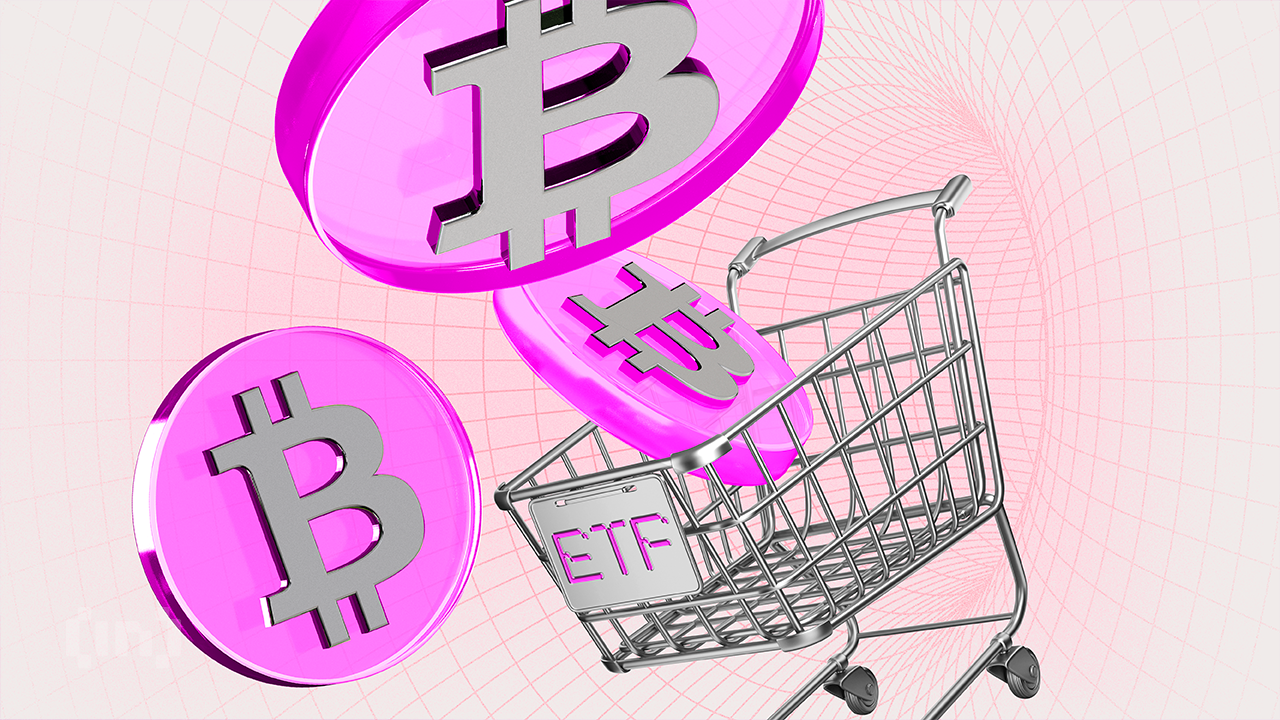
As the SEC is signaling its willingness to approve new altcoin ETFs, 72 active proposals are awaiting a nod. Despite the growing interest from asset managers to launch more altcoin-based products in the institutional market, Bitcoin ETFs currently command 90% of crypto fund assets worldwide.
New listings can attract inflows and liquidity in these tokens, as demonstrated by Ethereum’s approval of ETF options. Still, given the current market interest, it’s highly unlikely that any crypto found will replicate Bitcoin’s runaway success in the ETF market
Bitcoin Dominates the ETF Market
Bitcoin ETFs dramatically changed the global digital assets market over the past month, and they are performing quite well at the moment. In the US, total net assets have reached $94.5 billion, despite continuous outflows in the past few months.
Their impressive early success opened a new market for crypto-related assets, and issuers have been flooding the SEC with new applications since.
This flood has been so intense that there are currently 72 active proposals for the SEC’s consideration:
“There are now 72 crypto-related ETFs sitting with the SEC awaiting approval to list or list options. Everything from XRP, Litecoin and Solana to Penguins, Doge and 2x MELANIA and everything in between. Gonna be a wild year,” claimed ETF analyst Eric Balchunas.
The US regulatory environment has become much friendlier toward crypto, and the SEC is signaling its willingness to approve new products. Many ETF issuers are attempting to seize the opportunity to create a product as successful as Bitcoin.
However, Bitcoin has a sizable head start, and it’s difficult to imagine any newcomer disrupting its 90% market share.
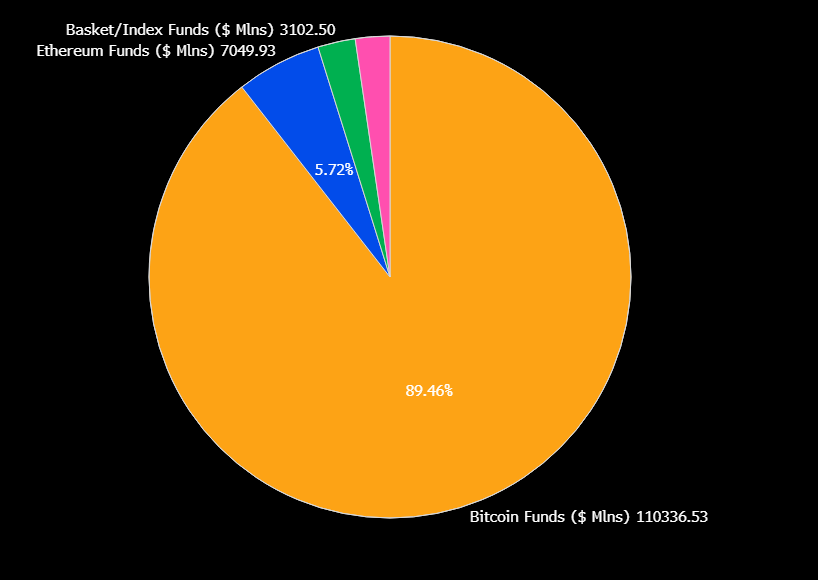
To put that into perspective, BlackRock’s Bitcoin ETF was declared “the greatest launch in ETF history.” Any new altcoin product would need a significant value-add to encroach upon Bitcoin’s position.
Recent products like Ethereum ETF options have attracted fresh liquidity. Yet, Bitcoin’s dominance in the institutional market remains unchanged.
Of these 72 proposals, only 23 refer to altcoins other than Solana, XRP, or Litecoin, and many more concern new derivatives on existing ETFs.
Some analysts claim that these products, taken together, couldn’t displace more than 5-10% of Bitcoin’s ETF market dominance. If an event significantly disrupted Bitcoin, it would also impact the rest of crypto.
Still, that doesn’t mean that the altcoins ETFs are a futile endeavor. These products have continually created new inflows and interest in their underlying assets, especially with issuers acquiring token stockpiles.
However, it’s important to be realistic. While XRP and Solana ETF approvals could drive new bullish cycles for the altcoin market, Bitcoin will likely dominate the ETF market by a large margin — given its widespread recognition as a ‘store of value’.
Disclaimer
In adherence to the Trust Project guidelines, BeInCrypto is committed to unbiased, transparent reporting. This news article aims to provide accurate, timely information. However, readers are advised to verify facts independently and consult with a professional before making any decisions based on this content. Please note that our Terms and Conditions, Privacy Policy, and Disclaimers have been updated.
Market
Coinbase Lists RSR, Atkins Association Fuels Bullishness
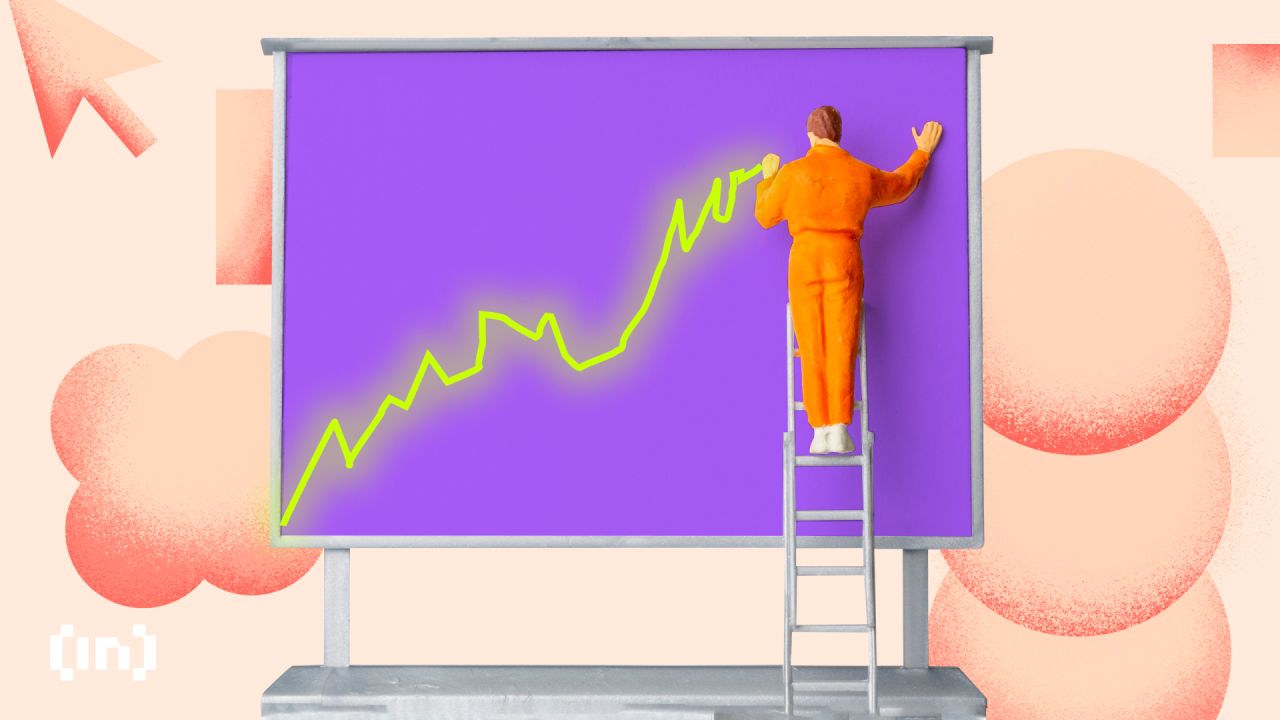
Coinbase is listing Reserve Rights (RSR), a dual‑token stablecoin platform aimed at creating a collateral‑backed, self‑regulating stablecoin ecosystem. Following the announcement, Binance’s ‘smart money’ traders are increasing long positions on the altcoin.
Incoming SEC Chair Paul Atkins was an early advisor for RSR, but he doesn’t maintain any active connection to the project. Nonetheless, RSR speculators may be anticipating some benefits from this old association.
Coinbase Lists RSR To New Enthusiasm
RSR has been active since 2019, aiming to upend the stablecoin ecosystem. It’s an ERC‑20 utility and governance token that underpins the Reserve Protocol, a dual‑token system designed to back and stabilize the Reserve stablecoin (RSV) at a $1 USD peg. RSR, a non-stablecoin, provides governance and backstop insurance to its counterpart.
The asset’s valuation peaked in 2021 but has been quiet since then until regaining prominence in 2024. Today’s Coinbase listing announcement saw RSR jump nearly 10%.
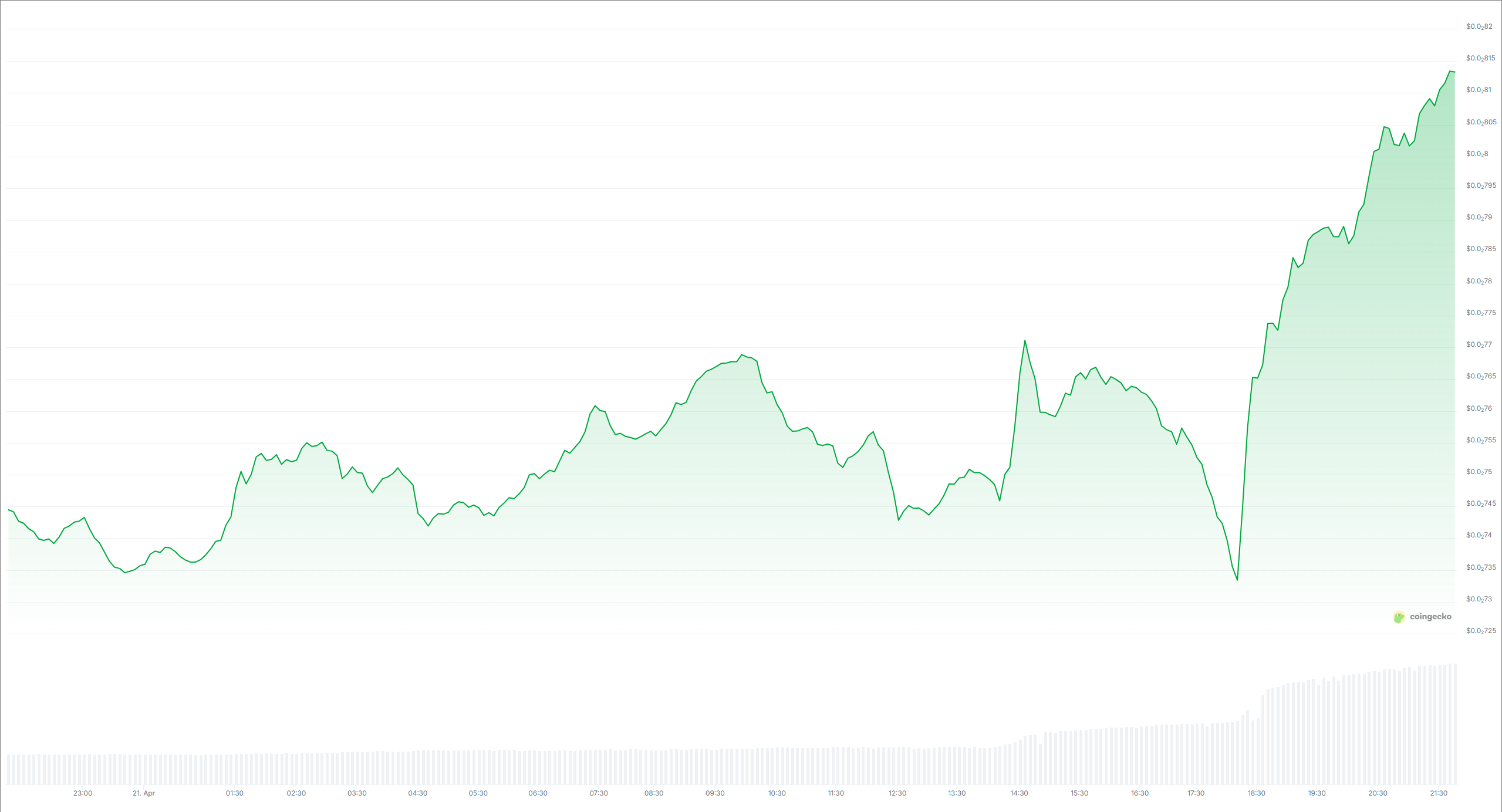
Coinbase first announced that it would list RSR a little under three weeks ago. Coinbase listings usually cause the underlying tokens to spike, and this has been no exception.
However, an intriguing side effect has also taken place. As the asset prepares its debut on Coinbase, top traders on Binance are showing a strong bullish positioning.

On Binance, the top‑trader long/short ratio measures the share of total open positions held as longs by the top 20% of accounts by margin balance. A 65.48% long ratio means these “smart money” participants are overwhelmingly betting prices will rise.
Meanwhile, beyond Coinbase listing, RSR is getting attention due to its link with incoming SEC Chair Paul Atkins. Although Atkins disclosed his crypto investments and has no current link with RSR, he joined the Reserve Rights Foundation as an advisor in its early stages.
Since Atkins succeeded in his confirmation hearing, RSR posted an impressive 22% rally. Technically, he hasn’t been seated as Chair yet, but traders are evidently expecting bullish developments.
Atkins has promised to bring crypto-friendly reform, and this connection could disproportionately impact his former associates.
That isn’t to say that anyone has alleged that Atkins will engage in corruption to unfairly boost RSR. However, since becoming President, members of Trump’s family have been involved in several controversial crypto deals. This precedent may be encouraging traders to believe in the importance of political connections.
For now, market narratives are very important in this industry. As Atkins officially begins his career as the SEC’s new Chair, RSR may continue to receive indirect benefits.
Disclaimer
In adherence to the Trust Project guidelines, BeInCrypto is committed to unbiased, transparent reporting. This news article aims to provide accurate, timely information. However, readers are advised to verify facts independently and consult with a professional before making any decisions based on this content. Please note that our Terms and Conditions, Privacy Policy, and Disclaimers have been updated.
-

 Bitcoin17 hours ago
Bitcoin17 hours agoUS Economic Indicators to Watch & Potential Impact on Bitcoin
-

 Bitcoin23 hours ago
Bitcoin23 hours agoHere Are The Bitcoin Levels To Watch For The Short Term
-

 Market19 hours ago
Market19 hours agoBitcoin Price Breakout In Progress—Momentum Builds Above Resistance
-
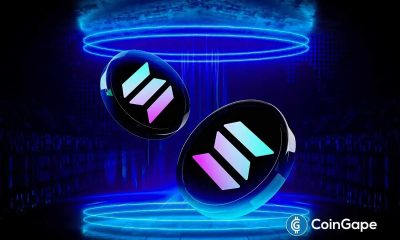
 Altcoin19 hours ago
Altcoin19 hours agoExpert Says Solana Price To $2,000 Is Within Reach, Here’s How
-

 Market17 hours ago
Market17 hours agoSolana Rallies Past Bitcoin—Momentum Tilts In Favor of SOL
-
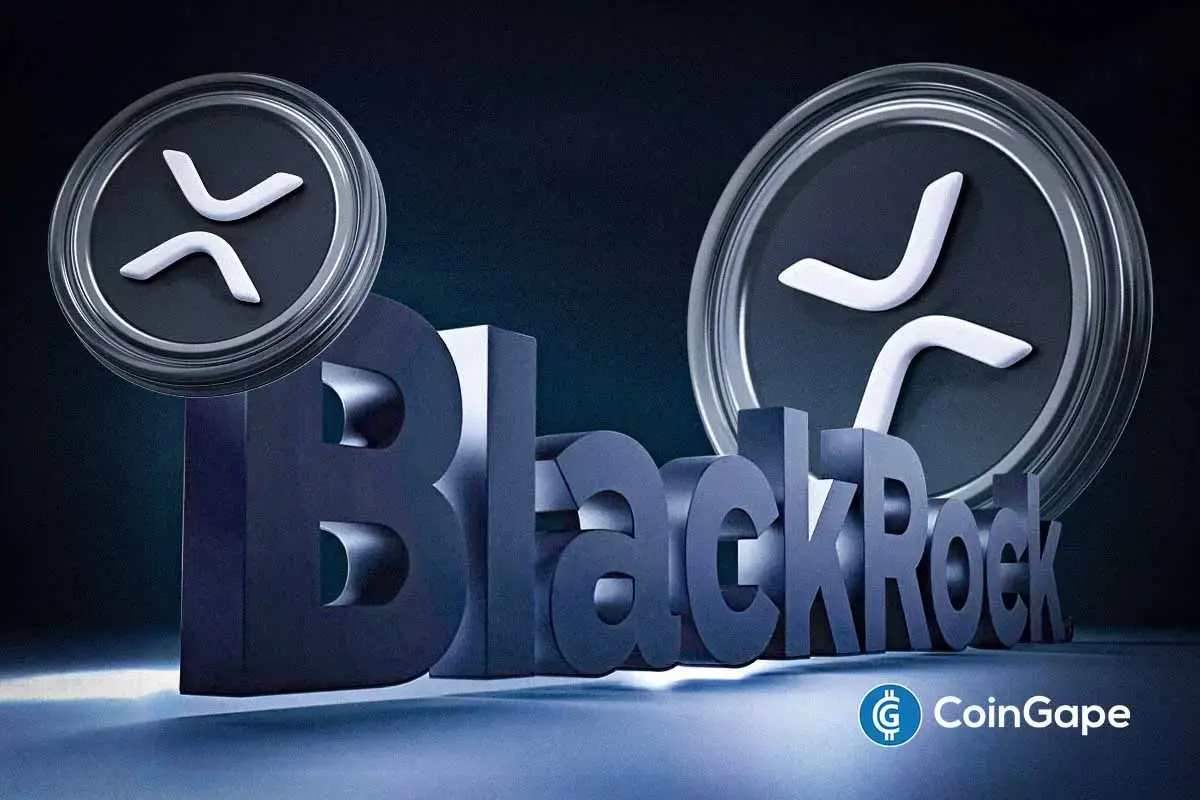
 Altcoin14 hours ago
Altcoin14 hours agoExpert Reveals Why BlackRock Hasn’t Pushed for an XRP ETF
-

 Market16 hours ago
Market16 hours agoVitalik Buterin Proposes to Replace EVM with RISC-V
-
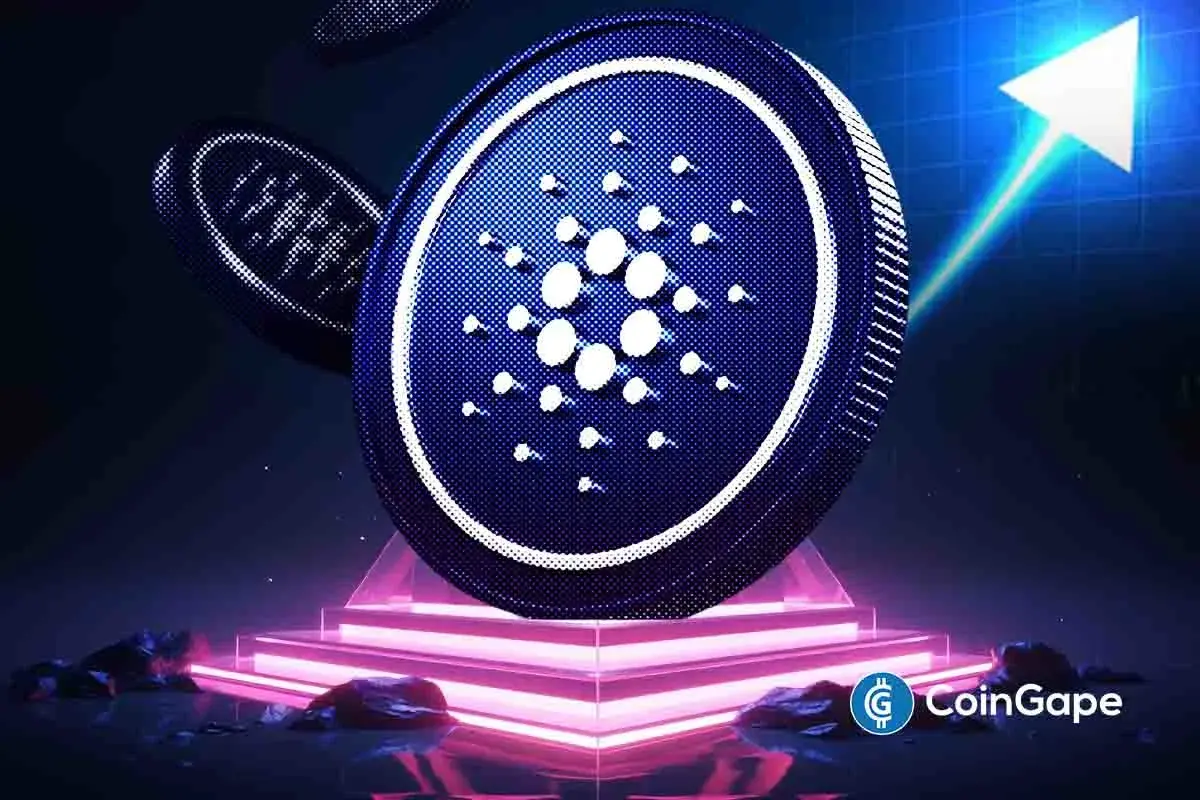
 Altcoin9 hours ago
Altcoin9 hours agoWill Cardano Price Break Out Soon? Triangle Pattern Hints at 27% ADA Surge




